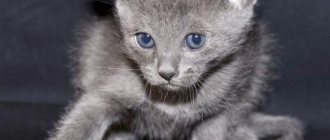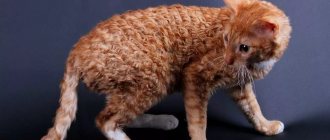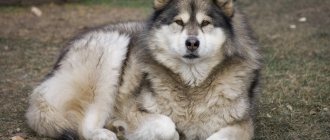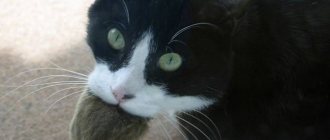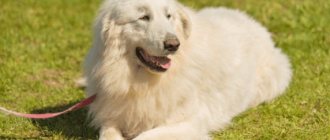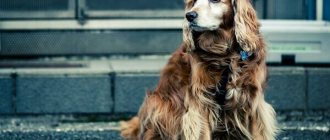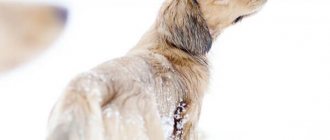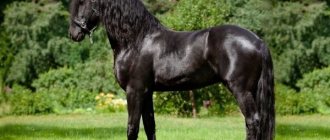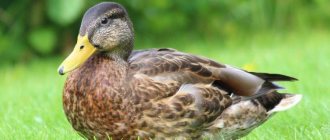Elves are unusual hairless cats with graceful movements and ears turned outward. Their exotic appearance evokes associations with the heroes of ancient fairy tales and makes you admire these cute creatures. And if you decide to get such a pet, it would be a good idea to find out how to choose the right kitten, what the standards are for this breed and the basic rules for caring for hairless animals.
Brief history of the breed
The elves were bred in the USA thanks to the dedicated work of American breeder Kristen Lead. After the death of her Sphynx pet, the woman decided to try to get similar cats that would not have a predisposition to serious hereditary pathologies.
To develop a new breed, Lead and her friend Karen Nelson decided to use Canadian Sphynxes and American Curls. The first few attempts were unsuccessful. But Lid did not lose hope and as a result received cats that resembled fairy-tale characters.
In 2006, elves were evaluated at TICA shows, and in 2007 they were given the status of an experimental breed.
Interesting Facts
In the short time the breed has existed, many interesting things have been associated with it:
- Elves are very rare and expensive cats. Since nurseries specializing in breeding the breed are concentrated in the United States, the average price of such a kitten is $1,500-2,000.
- These cats received the name “elf” due to their unusual appearance and bizarrely curved ears. And because of their resemblance to hairless Canadians, they are often called elven sphinxes.
- Due to the difficulties associated with finding a partner for mating, in some countries it is not prohibited to crossbreed Canadian Sphynxes and elves. True, kittens born from such a mating will be considered mestizos and some of them will turn out to be straight-eared.
Health and susceptibility to disease
Although the breed is still at the development stage, no genetic diseases have been identified yet. These cats have excellent health. With proper care, they can live comfortably up to 17-18 years.
Only ears
The only problem that Elf owners face is the appearance of acne on their skin. There are several reasons for this: poor nutrition, hormonal imbalance, poor care.
Breed description, standards, appearance
The Elven Sphynx is a hairless, slender cat with impressive coordination, long limbs, a graceful neck and curled ear tips.
In detail - “About breeds of cats with curled ears.”
Dimensions and weight
Elves are fairly large cats with pronounced sexual dimorphism. The weight of an adult male of this breed is 7-8 kg. The weight of an elven cat varies between 5-6 kg.
Anatomical characteristics
Ideally, an elf cat should meet the following description:
- The head is wedge-shaped, with prominent cheekbones, developed whisker pads and a flat forehead. The nose is straight, with a slight dent in the bridge of the nose. The eyebrows and whiskers are broken, and in some pets they are completely absent.
- The eyes are almond-shaped, large, slightly convex. The iris can be colored green, blue or yellow. According to the standard, heterochromia is allowed in elven sphinxes.
- Elves' ears are large, wide at the base, with curved, pointed tips. The tilt angle varies between 90-180 degrees. The stable cartilage should account for at least 1/3 of the length of the ear tissue.
- The body of an elf cat is lean, muscular, with a convex belly, which gives the elf a pear-shaped body. The neck is long, with a graceful curve. The chest is round and wide.
- The limbs are strong, slender with wide oval pads. The elf's hind legs are slightly shorter than his front ones. Because of this, it seems that the cat moves with a sneaking gait.
- The elf's tail is whip-like, long, wide at the base, with a pointed tip. At rest, strongly twisted.
Color and coat type
The body of the elven sphinx is covered with hot, thick, slightly grainy skin that feels like suede. There are pronounced folds near the shoulders, between the ears and around the muzzle. Short hairs may grow on the tail, paws, outside of the ears and the bridge of the nose, the length of which should not exceed 2 mm.
The color of the Elven Sphinx can be almost any color. The most common colors in the breed are beige, light gray, black and white. According to the standard, contrasting spots are allowed on the body of the Elven Sphinx.
Possible breed defects
Disadvantages in the presence of which the elf will not receive a high expert assessment:
- high-set ears, the angle of bend of which is more than 180 or less than 90 degrees;
- profusely pubescent body;
- rounded or grooved edge of the ears;
- the body is too massive or fragile;
- insufficient number of folds on the head;
- straight profile;
- narrowed head;
- twisted or deformed tail.
Description of elves
Elves, like their descendants the sphinxes, evoke conflicting impressions in people. Some people are delighted with the hairless creature, comparing it to a figurine, while others are scared or don’t know how to react. But in order to draw correct conclusions about the breed and appreciate its representatives, you need to delve into the features of the appearance and character of cats.
elves are one of the most unusual breeds
Hairless cats seem to be from another planet! They look completely different from the usual fluffies. And they behave proudly, too stately. Some of them are real freaks, and some are very nice.
Julia, site visitor
https://vseotzyvy.ru/item/6643/reviews-sfinks-lyisaya-koshka/
Appearance of elf cats
Elves have a thin but graceful body. They are strong and flexible. Due to the lack of hair, the ribs are clearly visible (especially on the voluminous chest). The back line is curved, the neck is long and graceful (the bend is clearly visible). The belly of the descendants of sphinxes is convex, which is why the body takes on a pear-shaped shape (the back of the body looks heavier than the front). However, elves are by no means lightweights. For all their elegance, they can reach 8 kg.
Almost any photograph of an elf shows his slender figure with a bulging chest
This cat's tail is not particularly long, but its smoothness makes it look like a whip. The limbs are muscular and developed, thanks to which elves can move very quickly. The forelimbs seem to be pressed to the body, the hind limbs are much longer than the front ones. Because of this feature, elves “sneak, not walk.” The paws are round in shape and look large relative to the body.
Elves have a wedge-shaped head with clearly visible cheekbones. The bridge of the nose is wide, like the nose. The ears are wide at the bottom, and the tips are pointed and curved back. It is this ear shape that is mandatory when determining the breed.
The eyes of a fairy cat are slightly convex and almond-shaped. Thanks to this combination, the elf's gaze seems expressive. Eye color - blue or green. In addition, elves can have odd eyes. Another distinctive feature of the breed is its “wrinkled” skin. The leather itself is smooth, but its surface has a “grainy” effect, so when touched, the skin seems velvety, plush. The possibility of the presence of fur cannot be ruled out (it can be in small quantities on the paws, tail and tips of the ears).
The elf's color can be almost anything: from white to almost black. Moreover, there were elves with the color-point effect. The presence of spots in the color of these cats is acceptable.
Photo gallery: elves of different colors
the lightest color of elves is white
non-cat elves have dark areas against a light main background (ears, nose, tail and paws)
elves can be with large spots or tortie color (tortoiseshell or marbled)
light elves can be heterochromic (one eye is green, the other is blue)
the delicate colors of elves include all shades of beige and sand
the darkest elf can be pure chocolate or black
Character of elves
Elves are affectionate, gentle cats who love their owners immensely. They adore family members and ask for the same in return. A fairytale cat can follow its owner around to get a portion of attention and affection. Elves love small children. Even if a child offends a cat, she will not hit him or scratch him, but will continue to love him.
Unusual cats love to communicate with any other pets, including dogs. If the animal ignores the cat's interest, it will not leave, as most cats do, but will try to attract attention to itself. Elves fit well into large families with children. Since the cat will suffer alone if the owner leaves home for a long time. You can even leave such a pet with a child, because the elf does not divide family members into “favorites” and “not favorites.” For an elf, everyone is equal.
Long-eared kittens will be real tomboys, but with age the ardor will subside, and it will be replaced by submissive devotion and love for humans. However, elves are considered intellectuals. There are both pros and cons to this. The elf's strong trait is cleanliness and discipline - he quickly gets accustomed to the litter box, understands a person's intonation and remembers the house rules (prohibitions). The downside is that, having a good memory, the elf may not forget the insult. Moreover, this will not necessarily result in revenge on the part of the cat, but it may lower the authority of the offender in the eyes of the pet. With a kind and caring attitude from the owner, this character trait will not manifest itself.
Character and temperament
The elf cat is endowed with a sociable and good-natured disposition. She quickly gets used to people and tries in every possible way to demonstrate her affection. A cat of this breed loves to be the center of attention and does not tolerate loneliness well.
On a note. Elven Sphynxes are very theatrical and mannered cats, prone to demonstrative “playing for the audience.” They can be capricious and often try to attract attention to themselves.
The Elf cat loves children very much and gets along well with kids. He is very careful in his play and is patient with children's pranks.
The sociable and friendly disposition of the Elven Sphynx allows him to easily find a common language with different pets. A cat of this breed will not conflict with either its brothers or non-aggressive dogs.
Mister Cat Recommends: Temperament Features
The shortest and most succinct characteristic of Elves is that they are intellectual cats. They are very curious, but not prone to rash actions. Just like their ancestors, they absolutely cannot stand loneliness. One does not become attached to a person quickly, but once and for all. They will constantly follow the owner, not lagging behind even for a minute.
Extremely friendly and affectionate. At the same time, they do not suffer from obsession. They adore only the owner, but they treat all household members with an equal amount of complacency.
These pets extend their good attitude to other animals. It may take some time to get used to each other, but Elves, if they accept other cats, dogs, even rodents into their pack, will never betray them.
Aggression is not in the nature of these animals.
Little Elves are very active, energetic and inquisitive. Adult pets are more sedate and like to be lazy, but they also don’t mind playing sometimes, especially with children.
Those who like to “talk” while sitting on the owner’s lap. They greet him home from work with joy, wagging their tail like dogs. These animals are sometimes considered vindictive and harmful. But that's not true. Elves are cautious cats; they will never come out immediately if there are new residents in the house, even guests.
They may be offended by inattention or a sharp shout, but they quickly move away, especially if you talk kindly and calm them down.
They also like to be capricious; pets need proper upbringing from an early age. An elf is an ideal friend and companion. Capable of anything for the sake of the owner. He can wait for him at the door for hours, talk by the fireplace and be a faithful companion on walks and travels.
How to choose the right kitten
Elven sphinxes are not very common outside the United States. In Russia there are only a few nurseries specializing in breeding this breed. Therefore, the search for a kitten may take a long time. To speed up the process and quickly become the owner of an exotic pet, it is better to contact foreign breeders.
Before making a final decision on purchasing an Elf cat, you need to make sure that he has documents confirming his breed and vaccinations. It also doesn’t hurt to look at the behavior of the kids and the conditions in which they are kept.
It is important that the kitten you like has a slender body covered with folded skin, a convex but not bloated belly and large ears with tips curved back.
On a note. The formation of the curve of the auricle in elven sphinxes is completed by 4-6 months. Kittens are born with straight ears, the tips of which begin to curl after a few days.
Kitten care
Weaning from the mother too early can negatively affect the character and health of little elves. Therefore, responsible breeders begin giving away kittens once they are 12 weeks old. By this age, elven sphinxes eat many foods without problems, know the litter box and know how to use a scratching post.
New owners will only have to show the pet where its toilet and bowls of water and food are located.
In order for the elf kitten to quickly get used to the changed conditions, he is given more attention and care. To avoid digestive problems due to a sudden change in diet, the hairless pet is initially fed what it ate from the breeder.
New products are introduced into the cat's menu gradually, and it should be monitored to see if they cause allergies. The elf's feeding schedule depends on the pet's age:
- 3-6 months – 4-5 times a day;
- 6-12 months – 3 times a day;
- from 12 months – 2 times a day.
On a note. Little elves are incredibly inquisitive and try to get into the most inaccessible corners of the apartment.
To protect them, wires, ornamental plants, household chemicals, and fragile and small items are kept away from kittens. And to prevent the Elven Sphinx from becoming a victim of its curiosity, you need to keep the doors of ovens, washing machines and dryers closed.
Elf cat price and list of nurseries
This breed is young and is not yet widespread in Russia and the CIS countries, but there are still several nurseries engaged in breeding elves:
- Moscow – Murmulet;
- Kaliningrad – Giving joy;
- Sochi – Magnificent;
- Kharkov (Ukraine) – Aurum pride;
- Belarus – “Scorpio”.
Elf cat with kittens
Prices for kittens start from 35,000 rubles and can reach 70,000. When purchasing from one of the American nurseries, you will have to pay from 1,000 to 1,500 dollars for an animal.
Care and maintenance
The body of elves is not protected by a fluffy fur coat. Therefore, the care and maintenance of these hairless cats is slightly different from the care of their ordinary counterparts. There should be no drafts in the rooms where elven sphinxes live. Also, the temperature there must be constantly maintained at 20-25 °C.
On a note. Elven sphinxes love warmth very much. To prevent hairless cats from getting burns, they need to be protected from direct sunlight.
The elf bed is set up in a quiet, cozy corner, away from heating appliances and electric fireplaces.
In order for a hairless cat to look neat, it is provided with proper hygienic care:
- Since representatives of the breed do not have eyelashes, their eyes are wiped daily with a cotton swab dipped in chamomile infusion or boiled water.
- The Elf cat's ears are regularly inspected for any unusual discharge. And the accumulated dirt is carefully removed with cotton pads moistened with a special lotion.
- The claws of the elven sphinx, as they grow, are extremely carefully shortened with a claw cutter so as not to injure living tissue.
- The cat's teeth are cleaned with a non-foaming toothpaste or a special brush 2 times a month.
- The skin of the elven sphinx is wiped daily with a piece of clean, soft, damp cloth. Particular attention is paid to folds in which keratinized particles and dust accumulate. Twice a month the cat is given bathing procedures. Bathe the elf in warm water using special shampoos for hairless breeds.
Contents of a fairytale elf cat
Due to the lack of fur on cats, elves often freeze. Moreover, they can freeze in the summer (on a cool day). Therefore, it is advisable to stock up on warm clothes for your pet even before he moves into your home. First of all, you need to prepare a cozy and warm place. The ideal option is a house with insulated walls, but a soft bed will also do. You need to install it away from the window, but so that the animal can clearly see the entire room from its place. You cannot place a bed near the radiator, as close heat can dry out the animal’s skin.
In addition to a sleeping place, the cat will need clothes: T-shirts, sweaters, overalls. You can choose your pet’s wardrobe at your own discretion, but it is advisable to provide items for all occasions. Some owners of hairless cats even buy special coats, hats and socks for cats. Cat clothes are bought not only to take beautiful photographs, first of all, these are things necessary to maintain the health of the pet. A budget option is to make clothes for your cat with your own hands.
My cat has fur, but she still gets cold sometimes (you can tell by the shivering). For walking outside, we have several vests that I made myself. The only difficult thing was to accustom her to things. So that she would not resist, I put the vest on her several times a day for 5 minutes and went out to the balcony with her. The cat is used to the vest being a walk. Now, for us to go out for a walk, she sits down next to her vest and waits.
Photo gallery: clothing options for a hairless cat
For walks on summer evenings, outfits made of fine knitwear are suitable
For everyday walks, a knitted sweater or vest is suitable
for walks in the winter, you need warm overalls or a coat
in winter, knitted or knitted sweaters that cover the back and stomach are useful
socks for cats are made in the form of mittens, but with anti-slip soles
home clothes for a cat can be a robe-overall
Nutrition
To feed the elf you need three bowls. One deep plate is needed for water, and the other two are for food. It is better to purchase ceramic or metal dishes. Plastic dishes wear out quickly, and a rough surface can become a breeding ground for bacteria. There should be constant water in the bowl (the liquid should be filtered and at room temperature). With food it’s a little more complicated. Cats can be fed commercially prepared food or natural food. In the first case, in order not to get confused when choosing food, check with the breeder what your kitten was fed. Try to find the same food. The ideal option is dry food. It is already balanced exactly as needed and beneficial for the cat.
When feeding naturally, you need to take into account that the food should be rich in proteins, carbohydrates and fiber. Most elves are gluttons, they eat quickly, swallowing food almost without chewing. At the same time, they love new products, as curiosity takes precedence over caution. Therefore, the menu should be varied. Meat should be the basis of the diet. It should be lean meat, such as beef.
Elf diet
Food for the elf can be prepared from the following products:
- beef, chicken giblets and raw chicken meat, turkey meat (can be finely chopped or minced, be sure to remove the bones;
- steamed fish (salmon, cod) in the form of boneless fillets, raw seafood;
- eggs (an adult cat can be given 1 boiled yolk (preferably quail than chicken);
- dairy products (milk is not recommended, but cottage cheese, kefir, yogurt and unsweetened yogurt are acceptable);
- cereals and grains (oatmeal, buckwheat, rice);
- fruits and vegetables (carrots, white cabbage, apples, greens).
An additional source of vitamins will be grass grown on the windowsill. Seeds of such grass can be bought at any pet store. In addition to vitamins, it contains a lot of fiber, which is very beneficial for the digestive system of cats.
when feeding an elf naturally, preference should be given to meat products
When I first bought this grass, I thought that the cat would refuse. After all, she doesn’t eat grass outside, and she’s not interested in house flowers either. But as soon as you showed her this grass, plucking the leaves became the cat’s favorite pastime. Animals cannot bite off a piece of the sprout (like people who eat the feathers of green onions), but they can pinch off. My cat picks off each sprout and tastes it. Those that seem suitable to her, she chews and swallows appetizingly, and those that she doesn’t like, she spits out.
You also need to remember the list of foods that should not be given to elves:
- chicken and fish bones (cat may choke);
- pork, goose, duck (they can be infected with worms, moreover, such meat is a fatty product);
- smoked, fatty, spicy and salty foods;
- sweets (chocolate can cause poisoning, sweets are dangerous due to allergies, and in general, sweets spoil cats’ teeth);
- potatoes (starch is not digested by cats' intestines and can cause high blood sugar levels);
- legumes (not digestible by cats);
- salt and spices;
- medicines and vitamins that are intended for people.
the elves will decide for themselves which vegetable or fruit they like
You can make yourself a reminder that will indicate which foods and in what quantity should be included in your elf’s diet:
- raw beef or veal, previously frozen - 110–130 grams per day;
- Boiled chicken meat without bones - about 3 times a week;
- meat by-products (chicken or beef liver, also heart, lungs and kidneys, raw after freezing or boiled) up to 2-3 times a week (liver no more than 1 time a week);
- boiled fish no more than 2 times a week;
- egg yolk (raw or boiled) 1-2 times a week;
- fermented milk products 2-3 times a week;
- cereals up to 3 times a week;
- vegetables (boiled or raw) can be given as much as the cat wants.
How many times a day does an elf eat?
Since elves eat quickly, they can overeat, so you need to strictly control the portion size. It is advisable to feed the cat a little, but several times a day. If other adult cats can have breakfast and dinner, then the elf can be fed 3-4 times a day. Kittens are fed a little more often - up to 5 times a day. In general, the frequency and volume of feedings depend on the cat itself. A healthy, energetic teenage cat needs more nutrients than an older, calm, weak animal.
I heard that elves are similar to sphinxes in their habits. And I saw how the sphinx eats. He had a wide plate (20 centimeters in diameter) full of dry food. The cat had just been brought home from a walk and he was very hungry. He sat down near the bowl and began to eat, scooping up food with his mouth wide open (like an excavator bucket). From the outside it looked like he could fit half a glass of food in his mouth at a time, and he swallowed his “yummy” almost immediately. I would advise elf owners to divide even 1 feeding into several parts (add food as they are eaten). In the end, in such a hurry, the cat may choke. In addition, having quickly swallowed all the food, the animal will not understand that it has just been fed, and will ask for more.
it is important to control not only the cat’s diet, but also the eating process itself
How to care for an elf's appearance
To care for an unusual pet you will need the following tools and supplies:
- cotton swabs and Vaseline;
- cat toothpaste and a small toothbrush;
- cotton pads;
- nail clipper and scratching post;
- first aid kit (iodine, brilliant green, bandage, cotton wool, plaster, etc.);
- cat shampoo;
- towel.
Elves, like other hairless cats, need special care, so you need to examine your pet more often. The ears and eyes of such a cat need to be examined every day. If discharge accumulates in the corners of the eyes, they should be removed with a cotton swab dipped in clean water or a tea solution. If dirt or wax has accumulated in your ears, you can remove all excess with a cotton swab. You need to be extremely careful here. The skin of animals is very delicate, and the cotton wool can separate from the plastic stick and harm the pet. Therefore, it is better to first lubricate a cotton swab with Vaseline or other oil.
The elf's teeth should be brushed with a small brush and toothpaste intended for cats. This is a complex procedure, so it is not necessary to carry it out every day, but you need to monitor the condition of the animal’s oral cavity (especially with natural feeding). The recommended frequency of the procedure is once a month.
caring for an elf's appearance requires special attention
Elf cats cannot be called hyperactive, they will not spend hours scratching, so sometimes they will need to trim their claws. You only need to cut off the very tip of the claw (no more than 2 millimeters). If your elf is often busy with a scratching post, then his claws are already in good condition and do not need to be trimmed. In case of unsuccessful procedure (if you cut off too much and started bleeding), you should have a first aid kit. A bleeding wound should be treated with brilliant green.
Should you bathe your elf?
If there is no need to brush your cat’s hair, this does not mean that there is no need to bathe it. In this regard, elves are similar to people. The fact is that usually only the pads of cats' paws sweat. Nature has made it so that a cat can mark its territory through the moisture on its paws, leaving scent marks (even if a person does not smell this smell). But elves are a completely different matter. Hairless cats have a fast metabolism, this is necessary so that the cat does not freeze. Therefore, the skin of such pets secretes sweat. Of course, you don’t need to bathe your pet every day, but wiping it with a damp cloth is quite possible. A full bath day can be arranged, for example, once a month. The water procedure must be carried out in several steps:
- Fill up with warm water (in a basin or bathtub) to approximately 20 cm.
- Place a towel or a special anti-slip mat on the bottom.
- Lower the cat into the water so that it stands on the bottom with its back paws (its front paws can hold on to you or the edge of the bath).
- Wet the animal's body, including the neck and head (do not get any water into the ears or nose).
- You can wet the cat's face and wipe it with your palm.
- Apply some shampoo to your cat's withers.
- Distribute the shampoo over your entire body, except your head, and then rinse gently from the shower head.
- Wrap the cat in a towel and pat its body dry (use a second towel if necessary).
- After bathing, the cat can be dressed in something warm.
Elves need to be bathed often, but carefully
Feeding the cat
Elven sphinxes are big eaters. Due to their accelerated metabolism, their diet should be enriched with calories, proteins, carbohydrates and fiber.
When feeding dry food, Elf cats are given high-quality premium or super-premium products, without any questionable additives. The following brands are best suited for representatives of the breed:
- Royal Canin;
- Acana;
- Monge;
- Gemon.
With natural feeding, the diet of the Elven Sphynx should consist of 70-80% lean fresh meat. Also, a cat of this breed is given:
- eggs;
- boiled vegetables;
- porridge with water;
- offal;
- lean sea fish;
- dairy products.
Elves are forbidden to give bones, fatty meat, sausage, smoked meats, pickles, sweets and baked goods. You also need to make sure that fresh milk and any leftovers from the owner’s table do not get into the cat’s bowl.
Nutrition
There are even spotted elves
Elves are prone to allergies, and they may also have problems with the digestive system. The best option for such cats is super premium food. Special food for animals with digestive problems is also suitable. It is not recommended to feed dry and wet food at the same time.
Natural food is also suitable for these animals: rabbit, chicken or turkey fillet, veal, beef, offal and sea fish every 7-10 days. The diet should include cereals, vegetables, and dairy products. Buckwheat, rice and oatmeal are best; you can add a little carrots, broccoli, and spinach to the meat.
Elves are strictly prohibited from giving the following foods:
- bread, cookies, buns;
- sweets, cakes, chocolate;
- salted, fried, spicy or smoked foods;
- salo;
- potato;
- mushrooms;
- beans;
- whole milk.
Education and physical activity
The Elf cat breed is distinguished by high intelligence and cleanliness. These hairless pets easily learn the rules of behavior in the house and quickly get used to the tray and scratching post.
True, elven sphinxes are very vindictive and do not forgive insults. Therefore, it is necessary to raise a pet of this breed without rudeness or the use of physical force.
As children, Elf cats are very energetic and playful. And although the activity of pets decreases slightly with age, this does not mean that they will refuse to run after a ball or a laser pointer. Therefore, elven sphinxes should have several interactive toys and a corner with multi-level shelves.
Vaccinations and antiparasitic treatment
To protect the elf cat from viral and infectious diseases, it is vaccinated with a complex drug that stimulates the development of stable immunity:
- to calcivirus;
- rhinotracheitis;
- panleukopenia.
The first vaccination for an elf cat is given at the age of 7-8 weeks. After 4 weeks, the pet is vaccinated against the same diseases and against rabies. Subsequently, the elf is vaccinated on schedule once a year.
To prevent the cat from becoming infected with diseases carried by parasites, it is regularly treated for worms. The elf is given anthelmintic drugs 2 times a year with mandatory repetition after 10-14 days. The dose of the medicine is selected taking into account the weight of the pet.
Sterilization and castration
If you do not plan to breed a kitten when purchasing a kitten, then think about sterilization (castration). It is best to carry out the procedure when the animal is one year old. There is no need to delay this too much. The older the cat, the worse it tolerates anesthesia. And so the operation will take place without consequences for the pet.
The most wrinkled
The age recommended by veterinarians for castration (sterilization) of cats is a period of 1 to 2 years. The exception is cases where surgery is required for medical reasons.
Pros and cons of the breed
Elves, like cats of other breeds, have both advantages and disadvantages.
| pros | Minuses |
| Unusual appearance | High price |
| No shedding | Inability to tolerate low temperatures |
| High intelligence | Grudge |
Elves are affectionate and highly intelligent cats with an exotic appearance and good immunity. Thanks to their playful and good-natured disposition, representatives of the breed easily find a common language with all the inhabitants of the master’s apartment and are suitable for large families with small children.
Vices of the Elf Breed
Lop-eared kittens are born strong and genetically healthy. The breed is still being studied, but elf breeders claim that these cats have strong immunity. According to hybrid cat breeders, elves can live up to 18 years. Of course, such a life expectancy is only possible with proper care and a balanced diet.
The main problems of elves are the characteristic defects of all hairless cats. Hairless animals often have minor skin problems. It could be pimples or acne. This can be caused by poor diet, poor hygiene, or hormonal imbalance. Typically, certain areas of the body are covered with pimples:
- dorsal surface of the tail;
- back along the spine;
- muzzle, neck and submandibular space;
- surface of the abdomen.
Sometimes the entire body of an animal is covered with acne (for example, during puberty). There is a definite connection between the occurrence of acne and the color of the animal. Acne most often appears in blue or pink (cream) cats.
Hairless cats may develop pimples or acne
Are elves prone to diseases?
In general, the creators of the breed tried to achieve absolute health of cats. Elves have not yet been found to have a predisposition to genetic diseases, but any hairless cat can catch a cold (this is the price to pay for its unusual appearance without hair). Hairless cats do not tolerate respiratory diseases well, so you should try to avoid drafts and hypothermia. In addition, the elf’s body is not protected by a fur coat from ultraviolet rays, so if the cat stays outside for a long time, the cat may get a sunburn (for this reason, elves are usually not taken for walks).
The elf may also develop seasonal dermatitis (most often in females before or after estrus). At this time, you can contact your veterinarian to recommend medications for itching. If a cat scratches itself too much, sores may appear on its body. An infection can enter the animal's body through wounds. Veterinarians usually prescribe an injection (Dexafort) or a spray (Terramycin). However, if the itching is not severe and there are no sores, then it is better to try to avoid medications.
My friends have a hairless cat who scratches herself until she gets deep scratches (sometimes even on her face). So its owners used to use anti-scratch pads (silicone claw covers that need to be glued with instant glue). It was convenient and beautiful, but a friend began to notice that the cat was trying to tear off the pad with its teeth. As a result, they stopped using anti-scratch products. Now they are buying socks. There is a secret here: the main thing is that the socks fit the cat in size and have a thick, smooth elastic band. The cat tries to take off its sock exactly at the moment when it urgently wants to scratch something. While she is trying to take off one sock, the itching may stop and there is no need to take it off.
Elves may develop health problems from scratching their skin.
Defects in appearance
All bred elf kittens have the characteristic features of the breed, so at the moment any deviation from the breed standard can be called a defect in the appearance of an elf:
- deep-set eyes;
- Ears that are too curled or completely flat;
- legs too short, etc.
It is still difficult to say for what signs an elf cat can be disqualified from an exhibition, because strict and final standards have not yet been approved. But the basic requirements for elves are the same as for their relatives - the sphinxes. The main distinguishing feature of elves and the main characteristic of the breed are curled ears.
